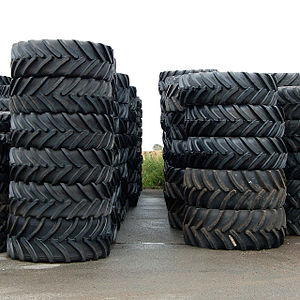Of all the major parts of your car, tires are likely to wear out first. The reason for this is the constant adhesion to various types of road surfaces in various climatic conditions for a certain period of time. In addition to this, poor driving habits, lack of maintenance combined with problematic suspensions, axles, steering and improper wheel alignment lead to possible wear of the rubber of which your car tires are made. Although the latter problems can be avoided, the main factor is still inevitable and is the reason that the tires lose their tread and fail. Running tires reduce ride quality, creating a serious threat to vehicle safety, causing skidding and loss of grip. In this situation, it is imperative that you select the tires for your vehicle according to the climatic conditions in your area and your driving needs. Various types of tires are available on the market today that meet the different driving needs in different climates. For example, if you live in arid areas characterized by extremely hot conditions and your car is concentrated around moderate city driving; You can use a set of dry tires in accordance with the technical specifications of your car, which are ideal for you. Choosing a tire based on your driving needs, whether for normal or off-road use, means that you always get the maximum performance from your car with excellent grip, excellent grip and no skidding. Tires will definitely work best for a longer period of time if they are compatible with different climatic conditions in your area. All-season tires are also available today, which function relatively well under most conditions of temperature, pressure and type of road. Although they are not designed for any particular type of road or weather, they provide efficient operation for a decent period of time under virtually any condition. Wider tires usually have better grip, while narrower tires can be lighter and add MPG to your car. However, with the introduction of alloy wheels, narrow tires have gone out of fashion, and it is wide tires that drive the roof. Do not forget to always choose the width of the tire in accordance with the recommendations of the manufacturer of your car. Excessively wide tires lead to excessive grip and dramatically reduce the fuel economy of your car. Again, different types of tires have different types of tread patterns, and these patterns, as well as the slight difference in material, help classify tires into different categories. Variations in tread design determine the suitability of the tire for a particular condition. For example, a tire with wide stocky treads is usually suitable for snowy or icy road conditions, as it provides much-needed additional traction. The rubber in these tires will also be slightly softer to avoid freezing due to cold. Some winter tires can even be studded for extra traction. If you use these tires on a dry road in summer conditions, they will be noisy and wear out very quickly. For this reason, there are special tires for wet roads, dry roads, snow and ice, for off-road and racing. Most manufacturers will include all-season tires in their car models or tires appropriate to local conditions. There is always the opportunity to upgrade from base tires to high performance tires that can increase your car’s performance. People living in regions characterized by extreme winters and harsh summers usually prefer to use two different sets of tires for any conditions. Depending on your budget and car type, you can also choose one of many options, such as tires with tires, tubeless tires, radial tires, used tires, etc. Whatever tire you choose, be sure to check if it supports it manufacturer of your car or not. You can consult your car’s owner’s manual to get a better idea of the type of tire your car is compatible with. Remember that before buying tires for your car or, possibly, when buying a new car, you can provide soft mileage for many years by making the right choice.
-Jack Wilson


